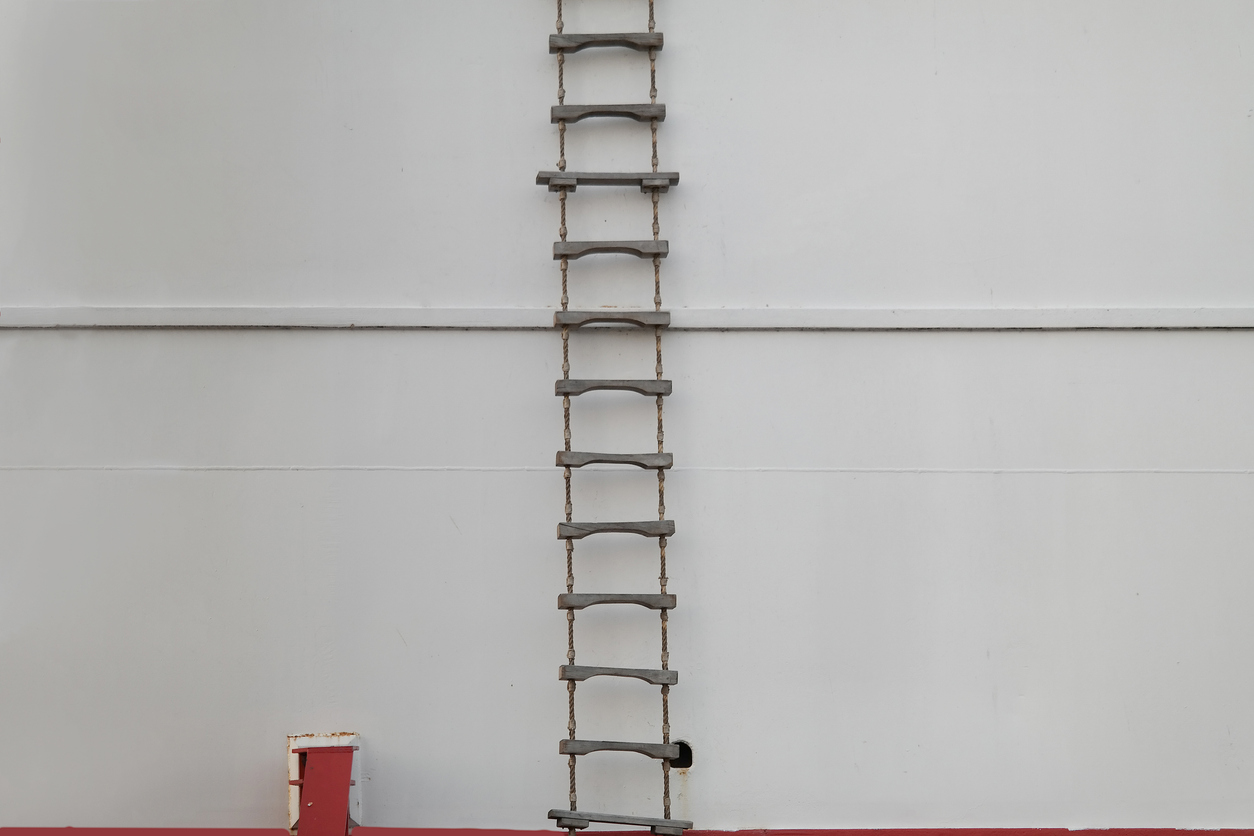
M2591 - Severe injury cased by a fall from pilot ladder
Initial Report
While descending a pilot ladder, a pilot fell approximately 5m onto the pilot launch and was severely injured. The standard operating procedure for this pilotage authority was for the pilot vessel to position itself at the foot of the ladder and remain there while the pilot or other personnel descended.
Our reporter was concerned that this procedure may conflict with best practice, as falls from even moderate heights onto a pilot vessel can be fatal. They prefer to be partway down a ladder before the pilot vessel approaches alongside.
CHIRP Comment
Pilot Transfer Arrangement (PTA) incidents often reflect broader systemic issues, such as inconsistent onboard training, insufficient supervision, or a lack of shared understanding of procedures. Ensuring all parties know what to expect and when is crucial for safety.
An educational video by the Federation Francaise des Pilotes Maritimes highlights that a fall from 3m onto a pilot vessel can cause serious injury, a fall from 5m can cause permanent disability, and a fall from 8m can be fatal.[1] This underscores the importance of clear communication and coordination between the ship’s bridge team, the pilot, and the pilot launch crew.
When a pilot is embarking, it is generally safer for the launch to move away from the vessel once the pilot is secure on the ladder and has started to climb. However, when the pilot is disembarking and still at the top of the ladder, the risk of fatal injury should they fall onto the pilot vessel is at its greatest.
This creates a conflict between 2 competing risks: that of falling from height onto a pilot vessel already at the bottom of the ladder, and the chance that the pilot vessel could snag the bottom of the ladder as it manoeuvres alongside, causing the pilot to be thrown off the ladder by the violent motion.
There is no ‘best’ answer that can be universally applied. However, the Standard Operating Procedures (SOPs) of many pilot authorities will favour the positioning of the pilot vessel at the bottom of the ladder before the pilot arrives at the top of the pilot ladder and begins their descent. CHIRP suggests that pilot authorities augment their SOPs by permitting the pilot some discretion if their dynamic risk assessment (conducted in coordination with the ship and the pilot vessel) indicates that, in that specific circumstance, the balance of risk favours the pilot descending partway down the ladder before the pilot vessel approaches the bottom of the ladder.
In all instances, the IMO guidance posters (MSC.1/Circ 1428) can reinforce good coordination and shared expectations. Clear communication, mutual awareness, and precise timing remain the most effective ways to ensure every pilot transfer ends safely.
Key Issues relating to this report
Situational Awareness – Be aware of the factors that can cause a pilot to fall. These include the weather and sea state, the relative movement of the two vessels, the height of climb and the efficacy of the ‘lee’ created by the larger vessel, among other factors.
Local Practices (Shortcuts/Deviation) – The operating procedures of this pilotage authority are contrary to global best practice. However, as written, this pilot’s descent of the ladder before the pilot vessel is at the foot of the ladder is also a deviation from documented practice. The pilotage authority is encouraged to reconcile these different perspectives to ensure that risks are as low as reasonably practicable (ALARP).
Communication/Alerting – The pilotage authority did not address the reporter’s concerns.
Pressure – There was implicit pressure from the pilotage authority for the pilots to adhere to a rigid operating procedure, despite this being contrary to industry best practice.
Key Takeaways
Regulators: Enforce best practice before tradition becomes a hazard.
Strengthen oversight to ensure disembarkation practices comply with international guidance and address cultural tolerance of unsafe methods.
Managers: Are risks “As Low As Reasonably Practicable” (ALARP)?
Review and align local procedures with international best practice to prevent normalisation of unsafe shortcuts.
Pilots/Contractors/Seafarers: Your safety comes first – don’t ascend or descend the ladder until agreed safety practices are in place.
Always verify the launch’s safe positioning before committing to the ladder, and challenge unsafe instructions if necessary.